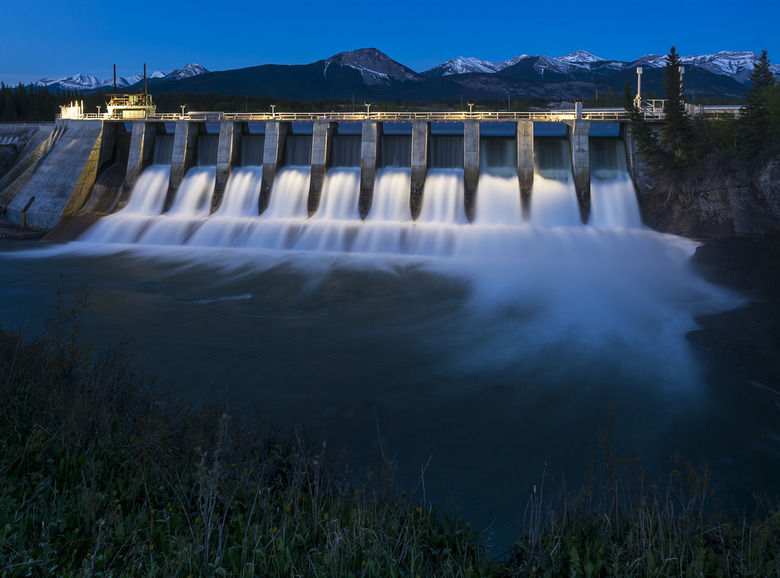Hydro Power Vs. Solar Power Advantages
Hydro and solar power technologies are two time-tested forms of renewable energy. While both of these technologies offer significant benefits to the environment compared to the burning of fossil fuels, such as coal or gas, each also comes with its own distinct set of advantages and potential drawbacks that affect energy policy and power production in the United States.
Cost Considerations
Cost Considerations
In terms of production costs, hydropower holds a strong advantage over solar power. The U.S. Department of Energy calls hydropower the most common and least expensive form of renewable energy in the United States. Hydroelectricity represents 6 percent of all U.S. energy production, and accounts for 70 percent of all renewable energy generated in the United States. Solar installations tend to cost much more. For example, 1 megawatt-hour of electricity costs $90.3 in 2011 dollars to generate using hydropower, or $144.30 to generate using solar collectors, according to the U.S. Energy Information Administration.
Environmental Impact
Environmental Impact
Solar power production poses few risks to the environment, according to the National Atlas of the United States. Much of the environmental cost of solar energy use comes from the manufacture, production and transportation of the collector panels themselves. Hydroelectric power generation, on the other hand, often comes with significant impact to the environment. Damming rivers impacts local habitats and ecosystems and may lead to flooding, changes in flow patterns and problems with fish migration.
Supply Stability
Supply Stability
Hydropower represents a more stable and reliable means of generating electricity than solar power. Solar power generation works best when the sun is at its peak, which generally happens during the middle of the day. After the sun sets, solar power systems have no more energy to draw from. Storms and clouds can also impact solar power production. The U.S. Department of the Interior calls hydropower more responsive than other systems for meeting peak energy demands. Hydro plants have the ability to switch systems on and off with ease to respond to changes in demand, which can help to eliminate blackouts and brownouts.
Availability and Access
Availability and Access
Solar energy can be used almost anywhere to power a home, generate electricity or run small appliances like roadside signs or even calculators. The U.S. Department of Energy's Solar Energy Potential Map shows that every location in the continental United States offers enough sunlight to generate at least 250 watts of electricity per square foot of collector space per day, with many locations capable of generating much more than that. Hydropower production, on the other hand, is limited to locations with access to a sufficient supply of running water to power turbines and other generating equipment. Many areas in the United States are considered exclusion areas, where federal or other statutes prohibit the use of hydropower production.
Cite This Article
MLA
Beach, Emily. "Hydro Power Vs. Solar Power Advantages" sciencing.com, https://www.sciencing.com/hydro-power-vs-solar-power-advantages-6513/. 9 March 2018.
APA
Beach, Emily. (2018, March 9). Hydro Power Vs. Solar Power Advantages. sciencing.com. Retrieved from https://www.sciencing.com/hydro-power-vs-solar-power-advantages-6513/
Chicago
Beach, Emily. Hydro Power Vs. Solar Power Advantages last modified March 24, 2022. https://www.sciencing.com/hydro-power-vs-solar-power-advantages-6513/
